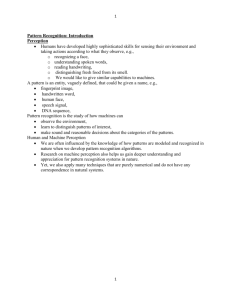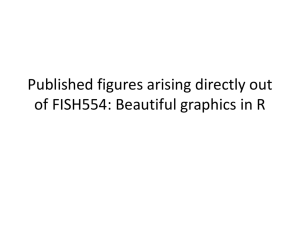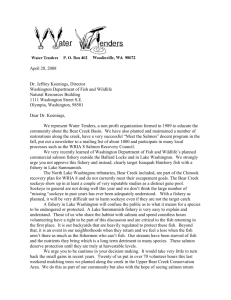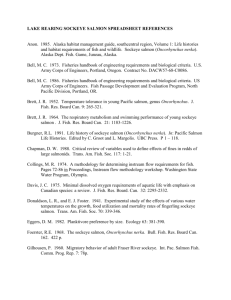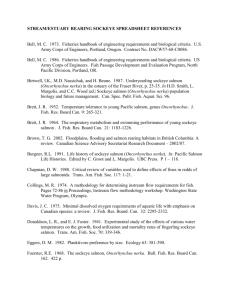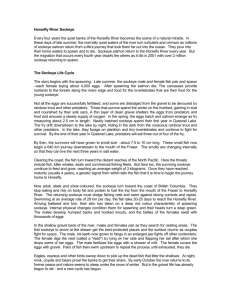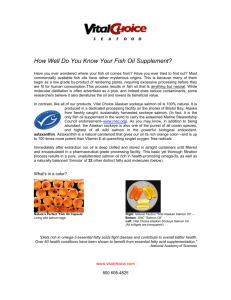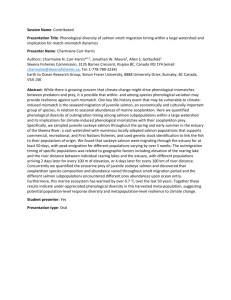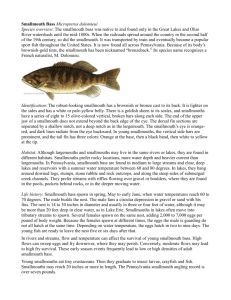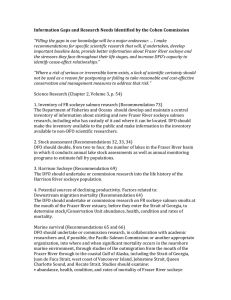Fish Assignment 1
advertisement
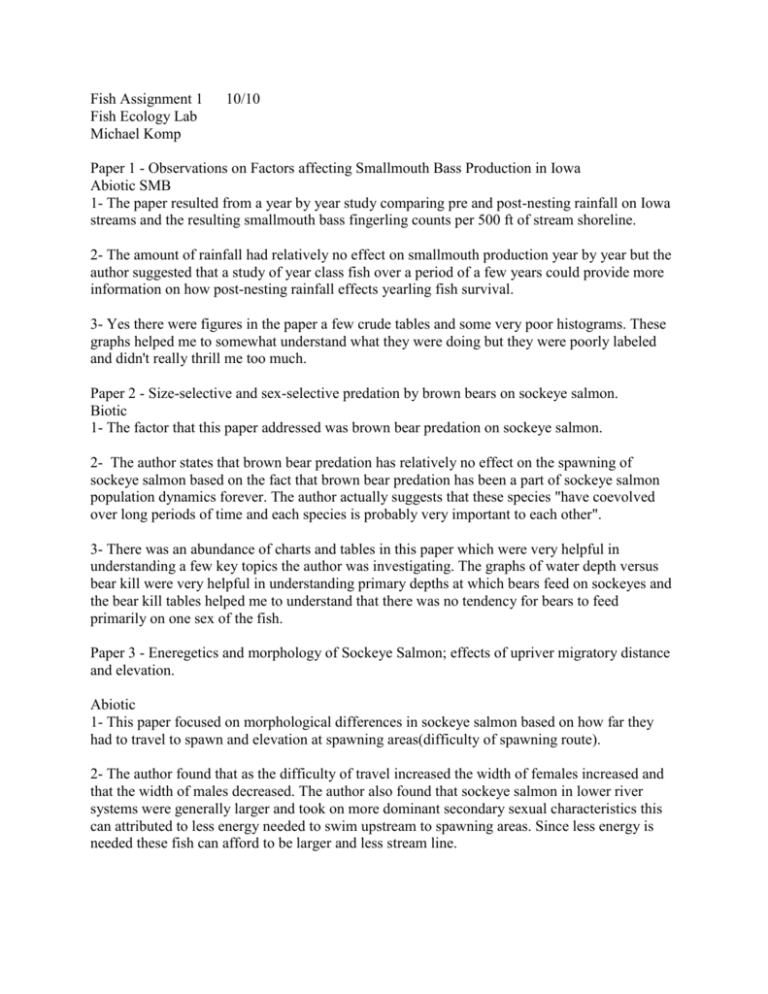
Fish Assignment 1 Fish Ecology Lab Michael Komp 10/10 Paper 1 - Observations on Factors affecting Smallmouth Bass Production in Iowa Abiotic SMB 1- The paper resulted from a year by year study comparing pre and post-nesting rainfall on Iowa streams and the resulting smallmouth bass fingerling counts per 500 ft of stream shoreline. 2- The amount of rainfall had relatively no effect on smallmouth production year by year but the author suggested that a study of year class fish over a period of a few years could provide more information on how post-nesting rainfall effects yearling fish survival. 3- Yes there were figures in the paper a few crude tables and some very poor histograms. These graphs helped me to somewhat understand what they were doing but they were poorly labeled and didn't really thrill me too much. Paper 2 - Size-selective and sex-selective predation by brown bears on sockeye salmon. Biotic 1- The factor that this paper addressed was brown bear predation on sockeye salmon. 2- The author states that brown bear predation has relatively no effect on the spawning of sockeye salmon based on the fact that brown bear predation has been a part of sockeye salmon population dynamics forever. The author actually suggests that these species "have coevolved over long periods of time and each species is probably very important to each other". 3- There was an abundance of charts and tables in this paper which were very helpful in understanding a few key topics the author was investigating. The graphs of water depth versus bear kill were very helpful in understanding primary depths at which bears feed on sockeyes and the bear kill tables helped me to understand that there was no tendency for bears to feed primarily on one sex of the fish. Paper 3 - Eneregetics and morphology of Sockeye Salmon; effects of upriver migratory distance and elevation. Abiotic 1- This paper focused on morphological differences in sockeye salmon based on how far they had to travel to spawn and elevation at spawning areas(difficulty of spawning route). 2- The author found that as the difficulty of travel increased the width of females increased and that the width of males decreased. The author also found that sockeye salmon in lower river systems were generally larger and took on more dominant secondary sexual characteristics this can attributed to less energy needed to swim upstream to spawning areas. Since less energy is needed these fish can afford to be larger and less stream line. 3- This paper was laid out very well and the graphs used were very helpful in understanding the point that the author was trying to get across. The graphs of size versus travel difficulty were the most helpful and interesting. Paper 4 - Diet and Growth of Smallmouth Bass in the Devils River, Texas Biotic SMB 1- This paper focused on the predation of smallmouth bass, what they eat and how it effects there growth. 2- The author found that crayfish and small fish were the most important parts of smallmouth diet in Devils River. They attribute the high growth rate to a longer growing season for the fish since it is at the most southern point of it's distribution. 3- There were no graphs in this paper but the tables were helpful in realizing what these fish are eating and in what quantities they are doing so. Work Cited Paper 1 Cleary, R., 1956. Observations on Factors Affecting Smallmouth Bass Production in Iowa. The Journal of Wildlife Management, Vol. 20, No. 4, 353-359. Paper 2 Quinn, T., Kinnison, M., 1999. Size-selective and sex-selective predation by brown bears on sockeye salmon. Oecologia,121:273-282. Paper 3 Crossin, G., Hinch, S., Farrell, A., Higgs, D., Lotto, A., Oakes, J., Healey, M., 2004. Energetics and morphology of sockeye salmon: effects of upriver migratory distance and elevation. Journal of Fish Biology, Vol. 65, 788-810. Paper 4 Roberston, M., Winemiller, K., 2001. Diet and Growth of Smallmouth Bass in the Devils River, Texas. The Southwestern Naturalist, Vol. 46, No. 2, 216-221.
